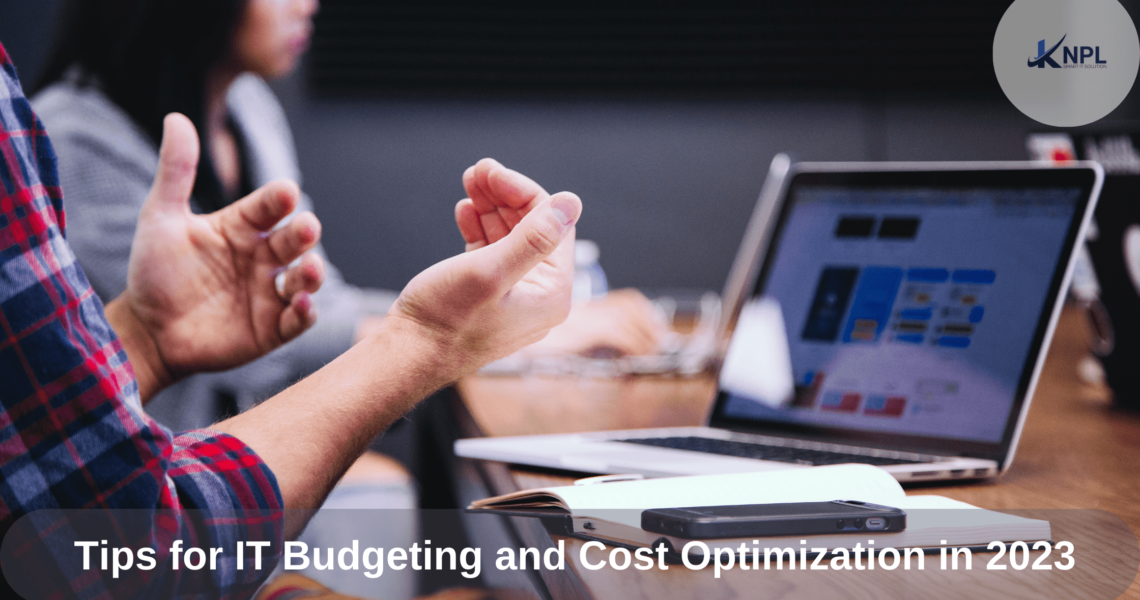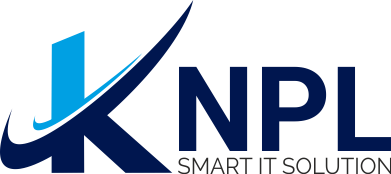
Effective IT budgeting and cost optimization are crucial for any business looking to maximize its profits and stay ahead of the competition. In spite of this, determining where to begin can be difficult with so many variables to take into account.
Here are some tips on creating an effective IT budget and optimising your expenses. From conducting a thorough analysis of your current expenses to exploring new technologies that can help streamline your operations, we’ll cover everything you need to know these tips will help you design a more efficient, cost-effective IT strategy whether you run a small business or manage a large corporation.
How important is IT budgeting?
The importance of IT budgeting cannot be overstated. For one, it allows companies to allocate resources effectively and efficiently. By having a clear understanding of how much money is available for IT projects, companies can prioritize initiatives and ensure that they are getting the most bang for their buck.
Budgeting also helps to prevent overspending and keep costs under control. Without a budget in place, IT departments may be tempted to spend too much on new technology or unnecessary upgrades, which can eat into profits and hinder growth.
In addition, budgeting provides transparency and accountability. By tracking expenses and reporting on progress regularly, companies can ensure that their IT investments are aligned with their overall business goals and that they are getting the expected return on investment.
Overall, budgeting in IT is crucial for organizations of all sizes. It helps to drive innovation while also ensuring that costs are kept under control and resources are being used effectively.
Read more: The Latest Trends in Web Development Services and What They Mean for Your Business
IT budget maximization: what you need to know
Today’s digital landscape demands that businesses maximize their IT budgets in order to remain competitive. To maximize your IT budget, follow these eight tips:
1. Prioritize your needs
Maximizing your IT budget requires careful planning and decision-making. One important step is to prioritize your needs. Discover the areas in which technology can have the greatest impact on your business operations.
For example, if you run an e-commerce business, investing in a reliable online store platform may be a top priority. On the other hand, if you have a remote team, investing in communication tools and software may be more important. By prioritizing your needs, you can ensure that your IT budget is being spent on the technologies that will have the greatest impact on your business. This approach can also help you avoid overspending on unnecessary technology solutions.
2. Consider open-source software
Anyone can modify and distribute free and open-source software. By using open-source software, you can save money on licensing fees and other proprietary costs associated with traditional software solutions.
Open-source software is also known for its flexibility and customization options. Many open-source programs offer a wide range of features and functionalities that can be tailored to meet the specific needs of your business. Additionally, because the source code is openly available, developers can quickly create patches and updates to fix any issues or bugs that may arise.
When considering open-source software for your business, it’s important to do your research and choose reputable programs that have a strong community of developers and users. By taking advantage of open-source solutions, you can stretch your IT budget further while still maintaining the functionality and reliability you need to keep your business running smoothly.
Read more: Tips for Choosing the Right IT Support Services for Your Business
3. Outsourcing IT services
One effective way to maximize your IT budget is to consider outsourcing IT services. By outsourcing, you can access specialized expertise and technology that may be too expensive to maintain in-house. This can help you save money on hiring and training employees, as well as on hardware and software costs.
Outsourcing companies often provide flexible pricing options, allowing you to only pay for the services you need when you need them. Moreover, outsourcing allows you to channel your internal IT teams’ attention to strategic initiatives that can drive your business forward. When choosing an outsourcing partner, be sure to research their reputation and experience in your industry to ensure they are a good fit for your organization’s needs.
4. Invest in cloud computing
One effective way to maximize your IT budget is to invest in cloud computing. You can reduce your IT infrastructure costs by utilizing cloud computing, which enables remote access to software and hardware resources. Rather than spending money on unnecessary hardware, you can use only what you need when you use cloud computing.
Additionally, cloud computing providers typically offer scalable solutions, which means you can easily upgrade or downgrade your service as needed, without having to make significant investments in new equipment. In the long run, cloud computing can improve your efficiency and productivity by freeing up your budget for other investments.
5. Consolidate hardware
One effective way to optimize your IT budget is by consolidating hardware. This means reducing the number of physical servers and devices that you have in order to save on maintenance costs, energy consumption, and space. By virtualizing your infrastructure and moving towards cloud-based solutions, you can reduce the need for physical hardware and simplify your IT environment.
Consolidation can help increase efficiency by streamlining processes and reducing redundancies. It’s important to carefully evaluate your current hardware usage and needs before making any changes, but consolidation can be a valuable tool in optimizing your IT budget and improving overall performance.
6. Implement virtualization technology
Implementing virtualization technology can be an effective way to optimize IT costs. A single physical server can consolidate multiple servers, reducing hardware and maintenance costs.
The technology of virtualization allows you to create multiple virtual machines, each running an operating system and applications of your choice. This can help to reduce the amount of physical space required for your IT infrastructure, which can result in lower rent and utility costs.
7. Leverage automation tools
When it comes to effective IT budgeting and cost optimization, leveraging automation tools can be a game-changer. Automation facilitates the elimination of manual labor and improves efficiency for organizations, thereby reducing costs.
Software updates, system monitoring, and other tasks such as these can be automated by automation tools, allowing IT staff to concentrate on more strategic initiatives. Automation can also reduce the risk of human error, which may result in costly downtime or security breaches. By incorporating automation into their IT operations, organizations can optimize costs while improving overall performance and productivity.
8. Conduct regular audits
When it comes to effective IT budgeting and cost optimization, conducting regular audits is essential. You may be overspending in certain areas, or saving opportunities may be available. An audit can help you identify these areas.
For example, by reviewing your software licenses and subscriptions, you may discover that you are paying for services that you no longer use or need. Additionally, regular audits can help you identify potential security vulnerabilities or areas where your IT infrastructure could be improved to increase efficiency. Auditing your IT spending regularly can help you keep track of your spending and allocate resources efficiently.
Conclusion
Effective IT budgeting and cost optimization are crucial for any organization looking to stay competitive and maximize its resources. By carefully managing IT expenses, businesses can not only reduce costs but also enhance their systems and infrastructure, leading to improved efficiency and productivity. A strategic mindset and a long-term focus are important when it comes to IT budgeting.
This includes regularly evaluating expenses, identifying areas where savings can be made, and investing in new technologies that align with the organization’s objectives. With proper IT budgeting and cost optimization strategies in place, organizations can drive growth, improve performance, and achieve sustainable success. If you want to learn more about how to optimize your IT budget effectively, be sure to explore our other blogs on this topic.
FAQs
1. Why is effective IT budgeting and cost optimization important for businesses?
Effective IT budgeting and cost optimization is important for businesses because they can help them reduce expenses, improve efficiency, and increase profitability. It also allows businesses to allocate resources strategically to meet their objectives.
2. What are some strategies for effective IT budgeting?
Some strategies for effective IT budgeting include aligning your IT budget with your business objectives, tracking your IT expenses, prioritizing your IT investments, identifying areas where you can reduce costs, and regularly reviewing and adjusting your IT budget.
3. How can businesses optimize their IT costs?
Businesses can optimize their IT costs by using cost-effective technologies, outsourcing IT functions to third-party providers, consolidating IT systems and services, standardizing IT processes, and adopting cloud-based solutions.
4. What is the role of IT governance in effective IT budgeting and cost optimization?
IT governance is the framework of policies, procedures, and decision-making processes that guide how IT resources are managed within an organization. It plays a critical role in effective IT budgeting and cost optimization by providing oversight and accountability for IT spending and investments.
